#exported clothing
Text
I always thought of the thrift store as a comforting place. Somewhere I could reliably and conscientiously take unwanted clothing to be resold and re-worn, or as the fashion industry has recently rebranded it, re-loved. In the process, charities do great things with the profits from reselling them: supporting troops. Saving pets. Curing cancer. But, like many of us, I never knew the full story.
Amid the explosion in online shopping and TikTok trends for fast-fashion hauls, thrift stores—and thrifting apps—have exploded in the last few years. In fact, in small towns like mine, brick and mortar stores have stopped being primarily a place to buy goods, but more often a place to dispose of them. According to one British study, we only wear 44 percent of the clothing we own. And when we need more room, how better to dispose of our old clothes than donate them to charity?
Unfortunately, it’s never that simple. Consider: only between 10 and 30 percent of second-hand donations to charity shops are actually resold in store. The rest disappears into a machine you don’t see: a vast sorting apparatus in which donated goods are graded and then resold on to commercial partners, often for export to the Global South.

The problem is that, with the onslaught of fast fashion, these donations are too often now another means of trash disposal—and the system can’t cope. Consider: around 62 million tons of clothing is manufactured worldwide every year, amounting to somewhere between 80 and 150 billion garments to clothe 8 billion people.
We rarely see the networks of people involved in processing, reselling, and eventually reusing the things we donate—vast networks that encircle the globe like a ball of yarn, conveying our unwanted things to people in places like Afghanistan or Togo or Bangladesh. Like anything we put in the bin, they are sent “away.” In this case not thrown, but given.
I wanted to follow that yarn—tracing the movement of donations through the textile traders who ship them off, and then charting the surprising places those clothes end up. Which is how, on a spring day last year, I ended up on a flight to West Africa.
Saturday in Accra, the capital of Ghana. Market day. Shoppers pack the streets of the central shopping district, the roads clogged with stalls and street hawkers. When you’re looking for second-hand clothes in Accra, there is only one destination: Kantamanto, the largest second-hand clothes market in Ghana, and perhaps in West Africa. Every week, 15 million garments move through Kantamanto, where an estimated 30,000 traders are crammed into just seven claustrophobic acres. The majority arrives, via container ship, having been donated to charities in Europe and North America. From here, the clothes will spread across Ghana and across borders, into Côte D’Ivoire, Togo, Niger, Benin and beyond.
The second-hand trade in Ghana and across West Africa exploded in the 1980s and ’90s as Western charities flooded Africa with clothing, intended both as fundraising and aid. When second-hand textiles first arrived in Ghana, the local population had no experience of such wastefulness. In fact, they assumed the owners of the clothes must have died, leading to the Akan phrase still marked on one of the entrances to Kantamanto: Obroni wawu, or “dead white man’s clothes.” (In Tanzania, second-hand clothing is similarly sometimes called kafa ulaya, or "dead Europeans" clothes’.) But the donations, however well intended, have done as much harm as good. Unable to compete with the flood of cheap goods into Africa, local textile manufacturing sectors collapsed. Between 1975 and 2000, the number of people working in the textile trade in Ghana fell by 75 per cent. Businesses simply couldn’t compete on price with a product people were throwing away.
I’m here to meet Yayra Agbofah and Kwamena Dadzie Boison, the co-founders of The Revival, a Ghanaian fashion brand that specializes in upcycling second-hand clothing. Yayra, The Revival’s creative director, is a towering, elegant man with a penchant for wide-brimmed hats and wider-legged trousers. Kwamena, the slighter and the quieter of the two, with a neat beard and a taste in rings, is the brand’s head of design. Together, they are two of the most stylish men I’ve ever met, today both dressed head to toe in black, Yayra in one of The Revival’s T-shirts which reads: ghana upcycling department.
Yayra has been shopping at Kantamanto since he was a teen. “Growing up I wanted to look fashionable, but I am not from a rich family that could afford the kind of clothes that I wanted,” he explains. “So I started to trade or redesign stuff that I got from my brother and my siblings. Then my brother introduced me to Kantamanto, and I fell in love with the second-hand market.”

Yayra Agbofah, left, and Kwamena Dadzie Boison of The Revival, a Ghanaian fashion brand that specializes in upcycling second-hand clothing.
A few years ago, Yayra started to hear traders in Kantamanto complaining about the declining quality of clothing shipments. He also saw it himself. “I used to collect vintage,” Yayra explains. Once upon a time, you could find gems among the endless reams of GAP hoodies and Next jeans: Alexander McQueen, Vivienne Westwood. Luxury fashion houses habitually slash unsold items, known as deadstock, so that it has no resale value. But sometimes uncut stock would find its way into the bales, providing an irregular supply of designer clothing to Accra’s eager fashion scene. In the last few years, however, the rising popularity of thrifting and resale apps has ensured that the highest-end clothing (and its resale value) is increasingly staying in the Global North, while fast fashion has unleashed a wave of ever-lower-quality clothing on Kantamanto.
The market runs to a timetable. On Mondays and Thursdays, containers arrive fresh from the port of Tema laden with new bales. The importers and textile dealers then sell the bales on to the traders. “The prices range from about $75 to about $500, based on where it’s coming from, and also the grade,” Yayra says. British bales command the highest price; this is partly due to better sorting, and the increased chance of finding unworn deadstock, which sells at a markup. "What comes in from America and Canada, you have a lot more waste." The bales are sold by garment type – men’s shoes, women’s tops – but the specific contents are a mystery, so after buying each bale, the traders will go through, valuing each item.
“It’s a game of luck,” Yayra says – one that more and more traders are losing. When the sellers can’t make their money back, many get into debt. Over time, as the quality has fallen, some have found themselves in a debt spiral, unable to get out.
Saturday is the busiest day of the week. It’s today that most traders open their bales for new shoppers, who can arrive before daylight in search of the best bargains. We, however, arrive mid-afternoon, hoping that the traders might have more time to talk now the crowd has thinned. The market itself is a maze of narrow lanes, held up by simple wooden struts and a tin roof. But its simplicity hides an entire self-contained neighborhood. Beyond the stalls, there are seamstresses; cobblers; dyers, who with a quick soak can restore a fading T-shirt or pair of jeans; a whole crew of men wielding flat irons (cast iron irons, heated over hot coals) to spruce up clothes. After hours, there are barbers and food sellers and secret bars playing uptempo beats, which throng with life when work is done. We wind our way down aisles filled with racks of clothes: Asos, Dorothy Perkins, Zara, some still with their charity shop labels on. The stalls themselves are tiny. The floor and gutters are carpeted with clothing.
Young women pass with clothing bales balanced on their head. They are kayayei (literally translated, “she who carries the burden”), porters employed by the sellers to move bales around the market. The kayayei, often illiterate teenage immigrants, are paid almost nothing; many live in the informal settlement of Old Fadama, a short walk from the market.
The majority of sellers in Kantamanto are women, and so Yayra and Kwamena respectfully call them "Auntie". We stop by the stall of Janet Oforiwaa, who has been working in Kantamanto for thirty years, since she was a girl working on her mother’s stall. She sells winter clothes: parkas, coats, tweed jackets. These might seem unlikely sellers in the heat of Accra, but have their own audience: fishermen, travelers and people in neighboring Burkina Faso, where the desert nights can be as cold as the days are hot.
Yayra and Kwamena have been shopping at Kantamanto for so long that they seem to know everyone. Traders holler in delight as they arrive, offering warm greetings and hugs.
Later, after showing me the market, Yayra and Kwamena invite me down to the headquarters of their own operation, the nonprofit upcycling business that they run. The Revival’s design studio, which is attached to Yayra’s house in a quiet Accra suburb. Like them, the place is perfectly styled: buffed wood floors, music playing, the room decorated with vintage sewing machines and photographs cut from fashion magazines. The studio is a treasure trove of thrift trash. Bales of clothing are piled all around: boxy suits, swathes of stonewash denim, a box full of men’s hats. On one rack Yayra has set up a little museum of uniforms: a police coat, Iraq war camo, US Navy jackets. A jacket from the US Army’s 307th Signal Battalion still displays both its insignia, Optime Merenti, “to the best deserving.” “We have big bags of these things, with names still on them,” Yayra says.
Every piece of used clothing tells a story of distance and time. An old leather American football helmet. A Pittsburgh Steelers jacket. A baseball cap from Mount Robson, ‘Highest peak in the Canadian Rockies.’ A whole rack of thick leather motorbike jackets, unusable in Ghana’s tropical climate. The Revival attempts to turn some of these unusable or unsellable items into stylish, desirable objects. ‘Our idea is: it’s here already, we cannot send it back, we don’t have the power. So we might as well just turn it to something functional here,’ Yayra says. The Revival works with the skilled craftspeople within Kantamanto – the seamstresses, tailors, dyers and cobblers – to help extend the lifespan of items that would otherwise be thrown away. Yayra takes out a bright red down jacket that they have resewn into a backpack. It’s an ingenious piece of design, both sustainable and surprisingly trendy. "Now we can use it, and it won’t end up in a landfill," he says.
The Revival is currently a non-profit, and each collection is small-scale and handmade. It sells its designs in pop-up shops in and around Accra. At the moment, the operation is tiny, and can account for only a fraction of the goods arriving in Kantamanto. “We realized that there’s so much waste, and that there is not enough demand for it,” he says.
Their response has been to find people who face clothing shortages, and to find ways to help them with waste. For example, in Ghana more than 80,000 fruit pickers suffer cuts and bruises while harvesting fruit crops without adequate safety equipment. ‘We have about 80,000 pineapple farmers in Ghana. And there is pineapple farming all over Africa and the Caribbean,’ he says. ‘Subsistence farmers don’t have the capital to buy protective clothing, it’s too expensive.’ So in 2020, The Revival developed a line of agricultural protective gear from discarded denim imports, which the brand has donated to farmers around Ghana. Yayra shows me a set of overalls which have been stitched to protect arms and limbs; the fabric itself is screen printed with a pop-art pineapple design. "We’re looking at producing uniforms for oil and sanitation workers," Yayra says. "And we’re looking at using the leather to make jackets for commercial bikers here, because a lot of them don’t wear protective clothing."
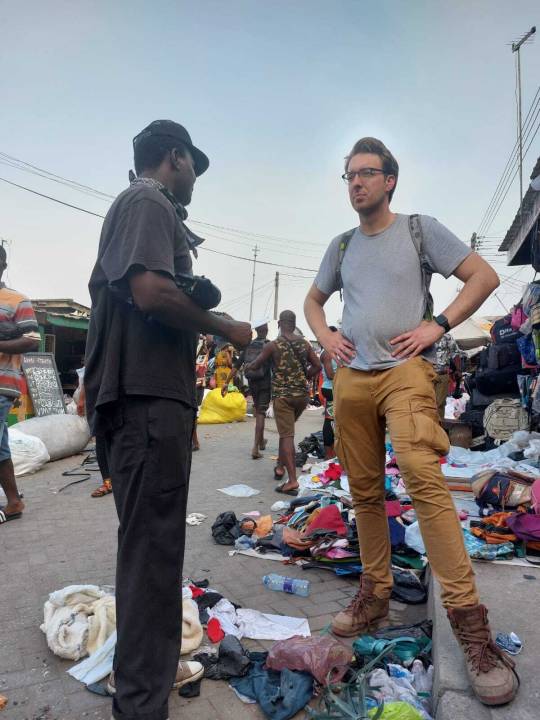
Oliver Franklin-Wallis, right, reporting in Ghana.
Of course, the Revival can only save so much. According to research by the OR Foundation, as much as 40 per cent of the clothing arriving at Kantamanto immediately becomes waste. At the end of the day private garbage collectors, known as bola boys, will pass through the aisles pulling carts, taking away unsold items. But collection itself costs money, and so some traders don’t bother, instead leaving waste to accumulate in the aisle and the gutters. The waste is stunning.
Several times a week, the city’s collection trucks pick up countless tonnes of leftover textiles dumped in the aisles and gutters around Kantamanto. Previously, the waste was hauled to an engineered landfill in Kpone, outside the city. But the massive influx of textile waste in recent years created impossible conditions within the landfill, Solomon explains. “The textile waste soaks up water, mixing with the dirt and the silt, and binding them together like concrete,” he says. As a result, the landfill’s compactor crews were having to make three times as many passes to crush the waste down. The consequences have been stark. At Kpone, “the void space that should take thirty to forty years to fill, was full in less than three years.”
The new municipal dumpsite is more than an hour’s drive from the city, and run by a private operator that is unwelcoming to outsiders. Old Fadama’s dumpsite, is a 30 ft mound of garbage on the edge of a lagoon. We decide to climb to the top. Yayra covers his face with a handkerchief; I pull my coronavirus mask over my face to help with the merciless stench. The rubbish crackles and gives way beneath my feet as we climb. Polystyrene chunks, plastic bags, whole chunks of an old LG television, smashed eggs being picked at by flies – and underneath it all, ribbons and ribbons of clothing. Yayra and I comb through the trash, picking out labels: Zara jeans, Adidas sandals, a blazer by Polo University Club, a now-defunct Ralph Lauren brand. “Some days you come and see fresh piles of clothes,” Yayra says.
We wade to the summit, trying not to fall. From there, we can look out on Old Fadama. At the top of the mound a herd of gaunt and sickly-looking cattle are grazing on the garbage. Longhorns. One has a tattered clothing sack tangled in her horn. She looks at me, the bag flapping in the breeze like a white flag.
This is an adapted extract from WASTELAND: The Secret World of Waste and the Urgent Search for a Cleaner Future by Oliver Franklin-Wallis
0 notes
Text


I present to you a design thing of Arval as some sort of fae creature based on the white plume moth.
#fe3h#fodlan#arval#few3h#fe warriors#fire emblem warriors#fe16#my art#three hopes#fire emblem warriors three hopes#feth#fire emblem#i have a sketch with the red parts of the clothing more visible but adding that to this#requires exporting from my ipad to my computer and im lazzzzzzzzzzzzy
45 notes
·
View notes
Text

warm and distorted by hyacinthed
But he has to stop. Blink hard. Shake his head, blink again, because ️—
His eyes are telling him that his stall neighbour, all six-feet-six of him, has materialised on their doorstep buck naked.
Well, discounting the creative positioning of their get the puck out doormat, carefully shielding Ty’s biggest concern from view.
(Or, wolf!Jani has a serious lack of boundaries. And clothes.)
WEREWOLF JANI LOVES HIS PACK. What if he was a werewolf and you were his team and he loved you so much that he would always take shelter at the end of the night with you. What else can I say...just a delight through and through.
For @hrpffandomeventblog's April event: moodboards. Photo credit: 1, 2, 3, 4, 5, 6
#fics i think about constantly...team keeping clothes for jani on the porch....jani eating all of wyjo's chicken wings...weh#this one took FOREVER i could not decide on a background finally exported got half through this post and WENT THIS SUCKS and redid it#the photos are thematic#it's about...jani's pack....AHHHH#fic rec#hockey for ts
7 notes
·
View notes
Text
sketch turned shading practice


#Yes. I gave up. On akiras clothes.#i did this in a 2 hour sitting#setting myself up for failure atp#artblock incoming#i cant draw for a week anywho cuz im goinnn on hollysss#persona 5#persona 5 royal#goro akechi#akira kurusu#ren amamiya#Pick a fucking name#persona#art#tapedecks draws#i screenshotted this because i cba to like export it etc so its not the best quality#dm me for the best quality if ur .Um curious idm#i love making akeshu friends....#also i fucked up akechis hand and its rly bugging me nowww..... UHGUhtrjb
17 notes
·
View notes
Text

Was excited that the morphs and weights on these finally looked nice in CAS I was not prepared for reality breaking the second I entered live mode.

Here's what it's supposed to be. I also have a fem frame version but the shorts are horrifically broken and the shirt is halfway stitched back together.
#don't forget to select generate mipmaps when you export your diffuse texture as a dds!#none of those words are in the bible!#I think that's what's going on?#as google said they're used for LODs#and the clothing textures just kind of...#melt off the further aways you go#if it's not that then idk lol
2 notes
·
View notes
Text
my only rant about BC is that their shop charges me, a citizen from a non EU country, VAT tax 🙃
#if retaking my uni's 2 levels of tax related subjects taught me anything is how to treat vat tax for imports and exports lol#and with how expensive their shipping to here is + all our regulations on foreign currency payments....... i'm not paying the same tax twic#recordshopx saves me every fucking year by not taxing me VAT + they have exclusive bundles which are very nice#the LOTSAD bundle was better tho. i expected a poster this time again not the shirt (which is awful. sorry) and signed pic#i hope they don't sign the pic with black markers on their black clothes like lost society did for if the sky came down lol#ps. i hope this doesn't seem like i don't wanna pay taxes because it's not like that lol but them charging me VAT is double taxation#i pay my taxes nicely and report the correct tax amounts to our customs unlike other people who import goods lmao
2 notes
·
View notes
Text

see i'm telling you they are in love
#is kas pointing a gun at tristan MAYBE i won't tell#and if he IS it's out of love. it's their love language. death threats#i need to export new rigs for them they've been in these clothes since forever#need to put kas in something slightly sluttier honestly
4 notes
·
View notes
Text
#nenna#youtube#tutorial playlist#split levels#change LTW#change screen size#how to export sims#build/buy basics#basements#how to change baby clothes#create L stairs#create U stairs#how to get debug content#play the game#building#download#installation#setting up the game#editwithsimpe
16 notes
·
View notes
Text
#clothing#extant garments#vendors#wholesalers#manufacturer#exporter#clothing manufacturers#clothing business
2 notes
·
View notes
Text
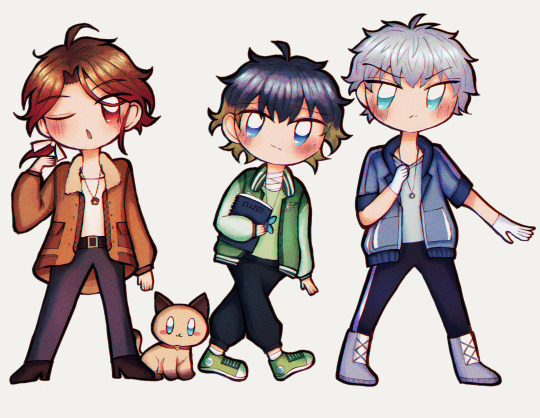
I feel like I pop out of the dead every month to post my swap AU nonsense (*~*)
Do NOT ask me about this AU I would NOT stop talking about it (×_×#)
All you need to know is Iv had a cat and is a massive cat person. Also Rio looks serious but his brain is just Wii music 24/7 (^^;)
Not done with Dai and Megu yet but doodle of them under the cut!

Bonus daimegu swap fact: when they first met Dai made fun of Megu's height and Megu shattered Dai's kneecap
#honeyworks#ft4#full throttle4#shout out to the irl who immediately started worrying when I started drawing Yui's neck bandages#also shout out to the irl who said that Rio looked like a jock because she thought he had Nike clothes or something#shout out to Yumi in particular. Yumi if you're reading this I am SO SORRY that you have to deal with my rambings (@_@)#my csp file deleted itself the moment after I exported this(ΟΔΟ;;)#red’s art tag
17 notes
·
View notes
Note
I'm looking forward to seeing the strawberry fields too! The image I got of camp this time through was a lot of fun; you couldn't pay me to do the climbing wall though haha (there were some campers picking strawberries in the book- I wonder if that's volunteer work or if they make the Demeter kids do it or if it's assigned haha) ~anon again
Yeah, I'm actually planning to re-read the Lightning Thief before the show comes out at some point, so that's going to be fun. I'm going to try get that picture I have out of my head and actually read what's written lol
Ha! In my head I imagine that the Demeter kids, and possibly Castor and Pollux, get assigned to tend to the strawberry fields a lot, but everyone has to participate in the picking. Likely, it's a morning chore so that you don't have to sit out in the sun picking berries at midday.
#each cabin probably has a certain row that they have to pick#i bet they get so many strawberry stains on their clothes#the kitchen nymphs probably make a lot of strawberry food#i mean isn't strawberries their main export that gives them money?#there has to be a lot of them for that#i wonder if they have a section that mortals can come and pick from#they just run a strawberry u-pick business on the side#camp half blood#pjo#pjo series#pjo disney+#percy jackson#pjo headcanon#asks#my asks#ask
9 notes
·
View notes
Text




Fashion in Spring
Daily fashion-Hoodie, black&white 2-tone stitching style
#fashion#daily fashion#fall fashion#girls fashion#girls wear#autumn fashion#autumn#printing skirt#nature#Fashion wholesale#Clothing export#China origin clothing#China origin garments#China origin apparel#chinese origin clothing#chinese origin garments#chinese origin apparels#Clothing wholesale#Fashion customization#garment customization#clothing customization#apparel customization#Fashion trade#Fabric wholesale#textile wholesale#textile#textiles#garment wholesale#garments#apparel
2 notes
·
View notes
Text
Best Clothing Manufacturer company in Delhi

Teggor Inc is a leading Clothing manufacturer that has been making quality jeans for men, women and children since its establishment in 2019. The company specializes in producing durable and stylish jeans that cater to the needs of all body types. With a talented team of designers and a state-of-the-art manufacturing facility, Teggor Inc is dedicated to offering the best clothing experience to its customers. Overall, Teggor Inc is an ideal choice for anyone looking to buy the best jeans at a reasonable price.
Teggor Inc is a manufacturer that offers high-quality kids jeans that are available for purchase on India's best online shopping stores. Their kids jeans are made of denim and come in a variety of patterns such as dyed or washed. The fabric used is of excellent quality, ensuring that the color of the jeans does not change. Teggor Inc offers a range of sizes, starting from 4-5 years old, with a waist size of 22 inches. With their commitment to providing stylish and comfortable clothes for children, Teggor Inc is a trusted company in the industry.
#Manufacturer of Clothing#Garments Manufacturer#Garments Exporters#Clothes Supplier#Garment Manufacturing#Garment Export#Clothing Factory#Wholesale Clothing Suppliers#Fabric Manufacturer#Clothing Manufacturers#Clothing Manufacturers Near Me#Clothing Exporters#The Clothing Factory#Custom Clothing Manufacturers#Apparel Manufacturers#Fabric Mills#Wholesale Clothing Manufacturers
2 notes
·
View notes
Photo
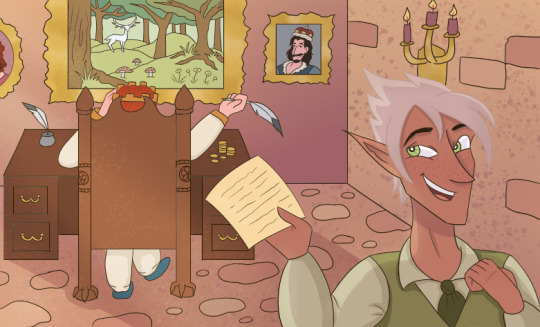



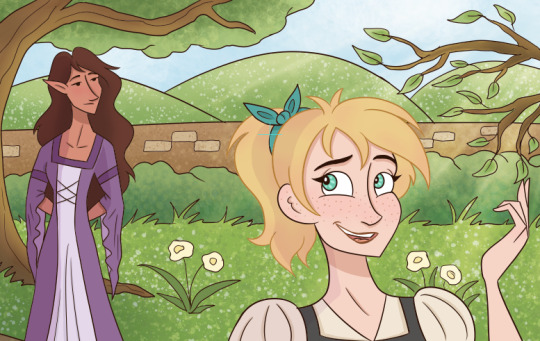
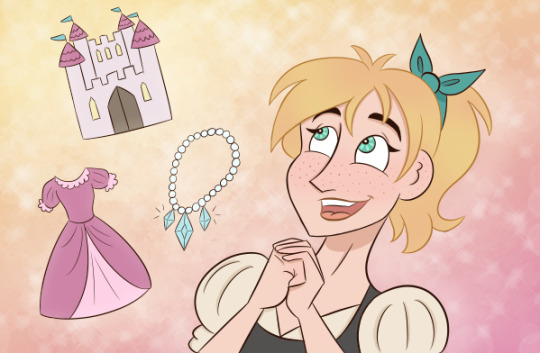


I just finished the next ten pages so here’s some more snapshots of my comic Stargazer, based on the story of the Twelve Dancing Princesses.
Part 1 here
#zen art#the twelve dancing princesses#don't bother looking it up lol#I haven't found a home for it yet#I guess I'm waiting until it's fully done#I keep going back and changing things#namely the princesses' clothes#I do hope to open a website domain one day#also publish some hard copies#I don't really know much about exporting comics though rip :')
6 notes
·
View notes
Text
American Clothing Suppliers: Clothing Manufacturer USA
Discover the top wholesale clothing suppliers usa, offering a wide range of high-quality clothing and accessories for your retail store. Elevate your product offerings with stylish and affordable fashion finds from reputable us clothing suppliers.
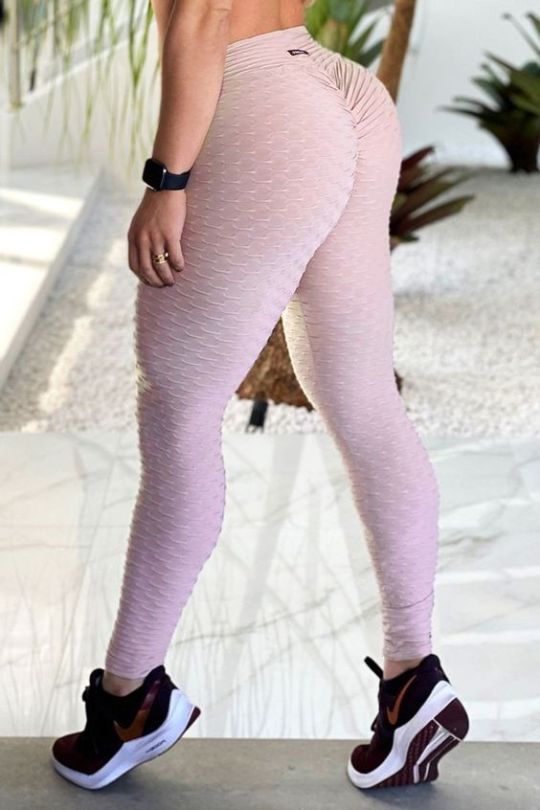
#american clothing suppliers#us apparel exporter#clothing manufacturer usa#usa made wholesale clothing#clothes distributors in usa#dress manufacturers in usa#private label apparel manufacturers usa#custom clothing manufacturers usa#dress manufacturers usa#usa wholesale clothing#fitness apparel manufacturers usa#athletic clothing manufacturers usa#singlet suppliers usa#garments manufacturer in usa#usa apparel manufacturers#usa clothing manufacturer#made in usa clothing#usa made apparel
0 notes
Text

Discover quality craftsmanship and Southern charm with apparel manufacturers in Jackson! From timeless classics to cutting-edge designs, elevate your wardrobe with locally-made fashion.
#clothes distributors in jackson#apparel distributors jackson#clothes suppliers in jackson#apparel manufacturers in jackson#coustom garments exporter jackson
0 notes